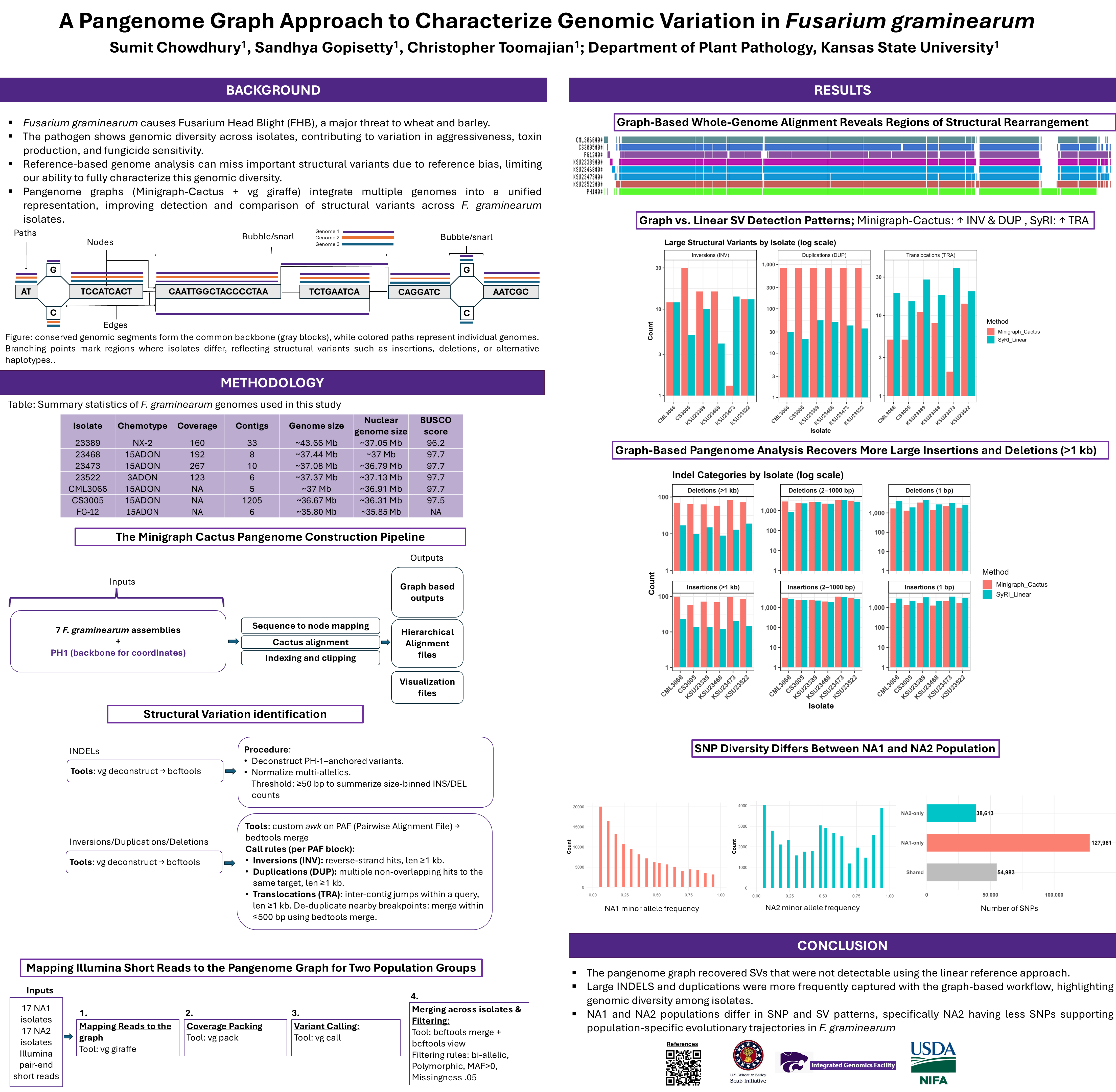Authors: Sumit Chowdhury 1, Sandhya Gopisetty 1, Christopher Toomajian 1
1. Department of Plant Pathology, Kansas State University
Corresponding Author: Sumit Chowdhury, sumit1@ksu.edu
Presenting Author: Sumit Chowdhury
Abstract
Fusarium graminearum, the causal agent of Fusarium Head Blight (FHB) in wheat and barley, consists of
genetically distinct populations. Variation within and between populations can be composed of both small-scale changes, such as single nucleotide polymorphisms (SNPs), and larger structural variants (SVs) of the genome. However,
analysis based on short-read sequences and a single reference genome is not designed to detect large SVs, leading to an underestimation of total genetic variation. To reduce reference bias, we constructed a pangenome graph using
long-read genome assemblies representing different populations of F. graminearum and performed graph-based read mapping and variant calling with Mini-graph Cactus and Vg Giraffe, respectively. The pangenome approach
identified a greater number of SVs compared to a linear-reference workflow. Graph-based variant calling also enabled the identification of high-confidence, polymorphic SNPs, with the NA1 population showing more SNPs than NA2. The
Minigraph-Cactus pangenome approach detected significantly more large (>1 kb) insertions (479) and deletions (410) across isolates than the linear-reference workflow using SyRI (98 and 83, respectively). Minigraph-Cactus also identified
more inversions (88 vs. 58) and duplications (4,981 vs. 234) compared to SyRI, while SyRI detected more translocations (139 vs. 45). These results demonstrate that pangenome graphs can more efficiently identify genomic variation, also
highlighting the need for continued refinement of graph-based methods for detecting inter-chromosomal SVs. Our ongoing work aims to improve the detection and interpretation of these SVs to better understand pathogenicity and
adaptation in F. graminearum.

